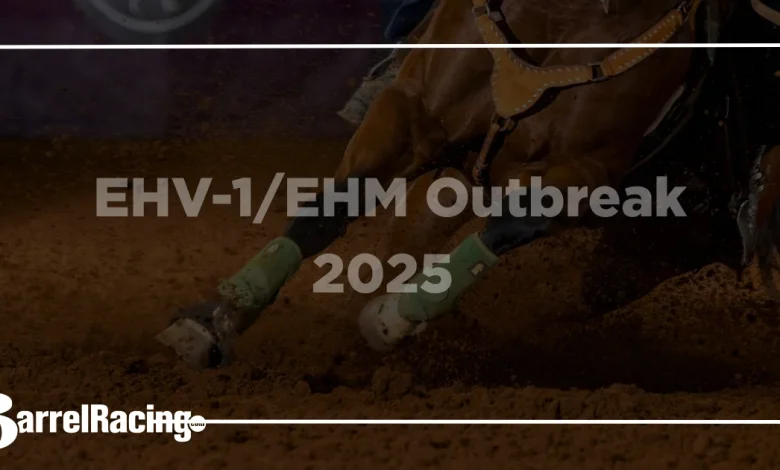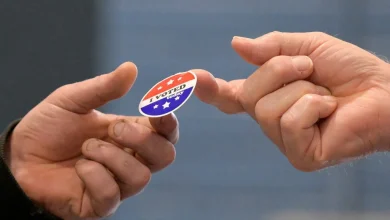EHV-1/EHM Outbreak: What Horse Owners Need to Know After Cases Linked to November Events in Texas

An aggressive strain of Equine Herpesvirus-1 (EHV-1) — including neurological cases classified as equine herpes myeloencephalopathy (EHM) — has been confirmed by multiple equine veterinary clinics in Texas. Several cases have been traced to horses attending major events in early November, including the WPRA World Finals and Elite Barrel Race held Nov. 5–9, 2025, in Waco.
The WPRA and Elite Barrel Race have publicly confirmed they are working closely with the Texas Animal Health Commission (TAHC) as the investigation continues. Both organizations report that no livestock had been on the facility grounds since Oct. 12, 2025, prior to the WPRA event’s arrival, and they are cooperating fully with state officials.
This update summarizes what horse owners should know about EHV-1, how the neurological form (EHM) develops, and the steps owners can take to monitor exposed horses and prevent further spread.
What is Equine Herpesvirus “EHV”?
Equine herpesvirus (EHV), sometimes called equine rhinopneumonitis, is a highly contagious family of viruses found in horses worldwide. Nine strains of EHV are recognized, but three pose the greatest disease risk in the U.S.:
- EHV-1 — respiratory disease, abortion/stillbirth, neonatal death, and the neurological form known as EHM
- EHV-3 — a venereal disease known as coital exanthema
- EHV-4 — respiratory disease in young horses, occasional abortion, rare neurological involvement
EHV does not infect humans.
Understanding EHV-1 and EHM
EHV-1 is the most concerning strain, capable of causing:
- Fever
- Respiratory illness
- Abortion in pregnant mares
- Neurological disease (EHM)
EHM (equine herpes myeloencephalopathy) is the neurological manifestation of EHV-1. It occurs when the virus affects blood vessels in the spinal cord and brain, leading to:
- Hind-end weakness
- Incoordination or stumbling
- Difficulty urinating
- Loss of tail tone
- Inability to stand (recumbency)
EHM can be life-threatening and requires immediate veterinary attention.
Common Symptoms of EHV-1/EHM
Because clinical signs range from mild to severe, horse owners should watch for:
- Fever (often the earliest sign)
- Nasal discharge
- Cough
- Depression or lethargy
- Weakness or incoordination
- Stumbling or ataxia
- Difficulty rising or inability to rise
- Difficulty urinating
- Loss of tail tone
- Abortion in pregnant mares
Some horses show no outward symptoms yet still shed the virus.
Monitoring Horses After Exposure
Veterinarians recommend twice-daily temperature checks for any horse that attended the Waco events or has been exposed to horses that did.
A rectal temperature of 101.5°F or higher should be considered significant — especially if accompanied by nasal discharge, coughing, or neurologic signs.
Any suspicious symptoms should prompt immediate veterinary consultation. Early detection dramatically improves outcomes.
How EHV-1 Spreads
EHV-1 spreads efficiently through:
1. Direct horse-to-horse contact
Nose-to-nose contact is the most common method of transmission.
2. Aerosolized droplets
Virus can spread through coughing or sneezing within close range.
3. Shared equipment (fomites)
Contaminated items such as:
- Buckets
- Feed tubs
- Grooming tools
- Tack
- Thermometers
- Trailers
- Stall walls
4. Human transmission
People can carry virus particles on:
- Hands
- Jackets
- Boots
- Gloves
- Lead ropes
- Keys, phones, etc.
5. Pregnant mares can pass it to their foals
Certain EHV-1 infections result in abortion or weak neonatal foals.
Latent Carriers: Why Outbreaks Are Challenging
EHV-1 can enter a latent state inside the horse’s body. Horses may carry the virus silently, without symptoms, and shed it again when stressed by:
- Travel
- Competition
- Weather swings
- Illness
- Training intensity
This makes biosecurity even more essential during high-traffic event seasons.
Official Guidance and Ongoing Monitoring
The WPRA and Elite Barrel Race have stated they are following all recommended guidance from the Texas Animal Health Commission. As of the most recent communication:
- No livestock had been on the event grounds for three weeks prior to the WPRA Finals arriving
- Both organizations are cooperating fully with the state investigation
- Additional updates will be released as TAHC completes its testing and tracing
The WPRA has also indicated further guidance will be provided regarding how this affects the San Antonio qualifier in Uvalde, Texas.
What Owners Should Do Now
- Monitor temperatures twice daily
- Isolate any horse showing fever or respiratory/neurologic symptoms
- Disinfect all shared equipment
- Avoid nose-to-nose contact between horses
- Contact your veterinarian immediately if symptoms appear
- Follow all TAHC and event-specific guidelines
For the latest official guidance from the Texas Animal Health Commission, visit:
https://www.tahc.texas.gov/animal_health/equine/
Industry Support
Our editorial teams will continue monitoring the situation and will update readers as official information becomes available. Our thoughts remain with the affected owners, competitors, and event organizers as they navigate this evolving situation.





